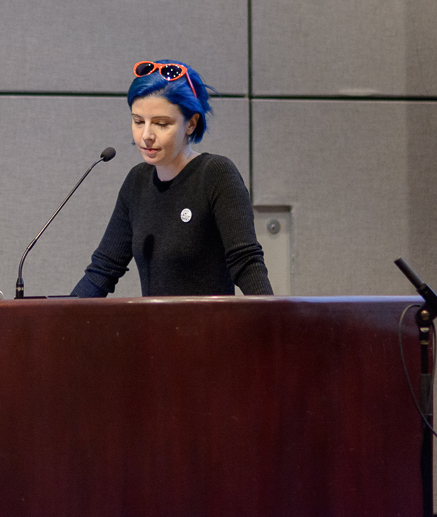
I have a habit of finding myself in spaces where I’m not supposed to be. As a first-generation college student at Harvard University, as a paleontologist studying Chinese history in graduate school, as a historian treating history as an art practice in disciplinary contexts and reading poetry at academic conferences, my professional trajectory has found me working to expand a collective sense of what’s possible, and who it is possible to be, in the spaces in which I work, live, and move.
I am a historian of the pre-modern world with a deep interest in the forms, methodologies, and processes that we use to understand and come into relation with the past. While my professional training is in the intersection of Chinese history and the history of science and medicine, my professional interests have evolved to focus more broadly on two concerns of my early work that had previously been on the margins: the history of translation (especially in early modern China), and historical craft and method (especially as it is informed by scholarly practices at the intersection of the arts and humanities). It has also become much more intentionally collaborative in nature and scope, and those collaborations have helped to expand the range of forms that I manifest my research and scholarship in so that they now include poetry, short fiction, performance, and experimental creative nonfiction. While they might initially look like very different, my projects are all organically linked in a common and coherent research agenda and trajectory that relies on my disciplinary training in Chinese studies and the history of science and medicine to extend in new directions that still cohere with the methodological, conceptual, and research goals of my work as a historian.
How we understand the past is fundamentally shaped by the forms, and the types of attention, that we use to investigate and translate knowledge about it. In my research, I am most deeply interested in how a historian’s work is shaped by their relationships with their documents, and how those relationships are in turn determined by arts of attention: observation, recognition, context, and translation. In order to explore these related arts and practices, and because I hold the conviction that the forms of the stories we tell help to determine the content of those stories, my current work makes use of poetry, fiction, creative nonfiction, performance, and collaboration with artists and writers working in different media in order to understand and translate the past. The overarching goal is to help expand the possibilities that we think of when we think about what history and historical work can look like, and to model and encourage a more expansive and inclusive notion of what, how, where, and why history is, while basing all of this in rigorous and disciplinarily-trained work with historical documents. While I continue to deeply respect more traditional forms of historiography, for me, at this stage of my work and career, history is also an art practice.
This site is in need of a re-zhuzhing, and I’ll be updating it over the summer months of 2021. Check back for periodic updates. For those who have found their way here because they’re looking for a CV for some professional purpose or another, here you go: here’s a CV for you. And thanks for stopping by!
One thought on “”
Comments are closed.